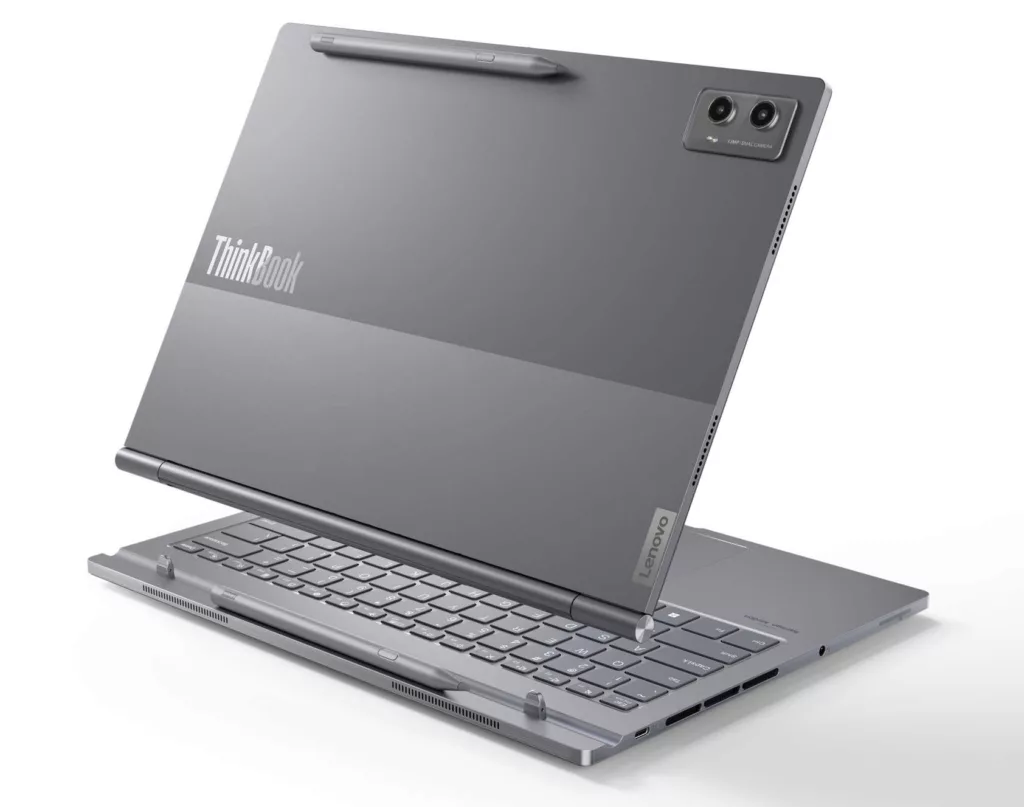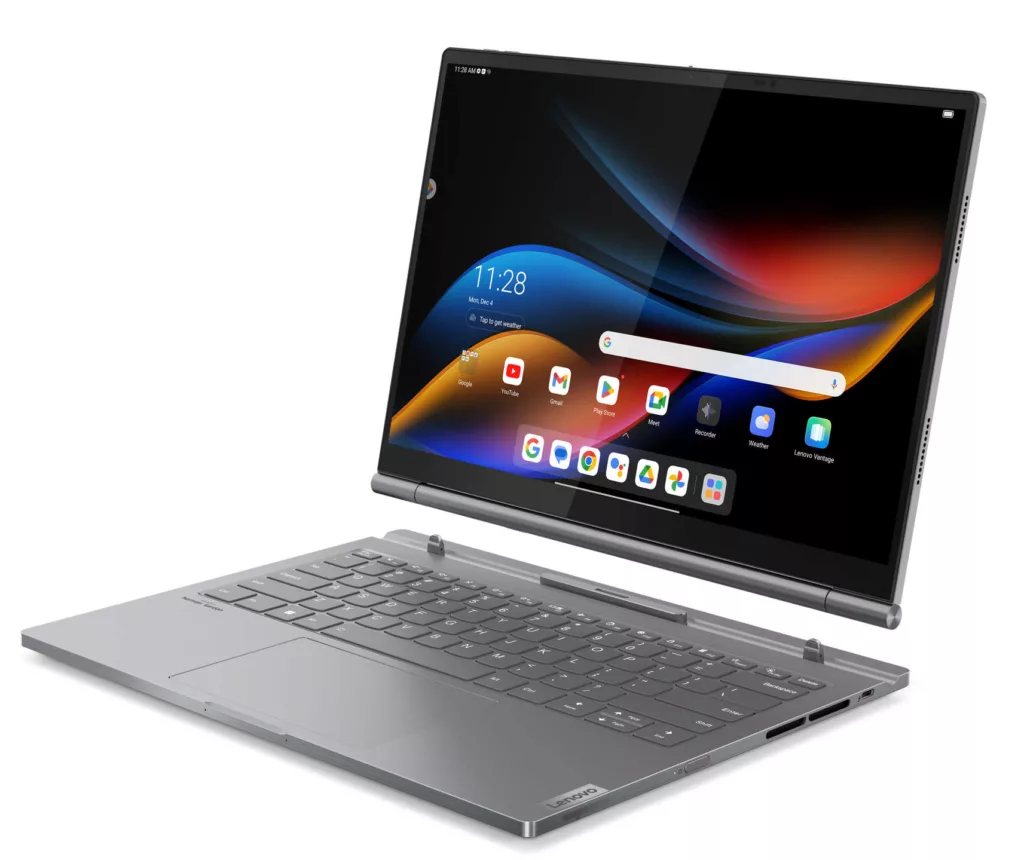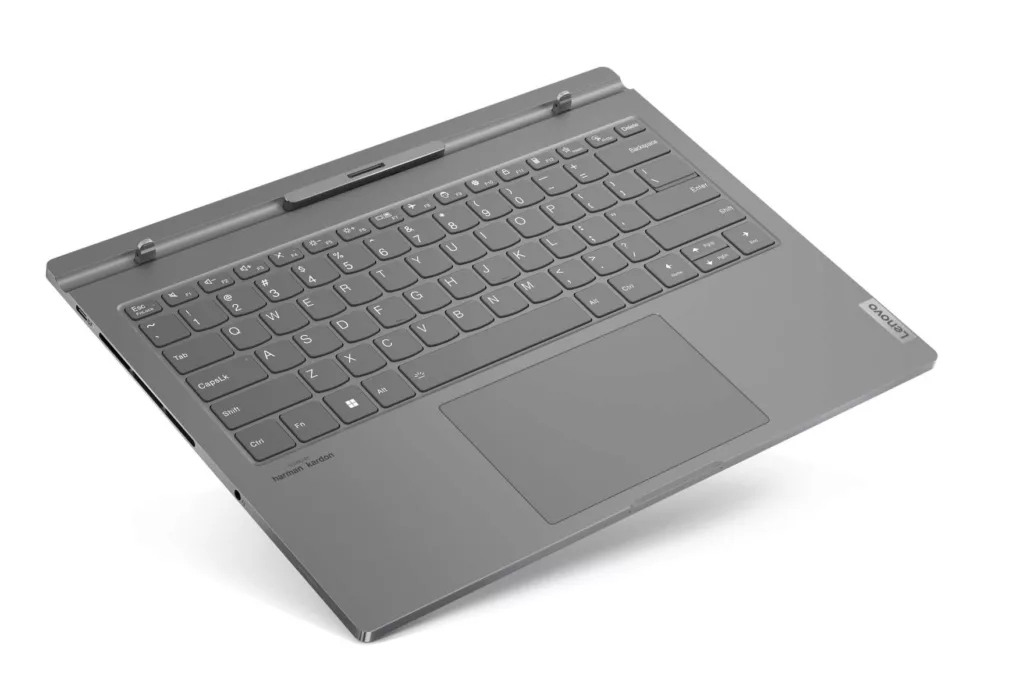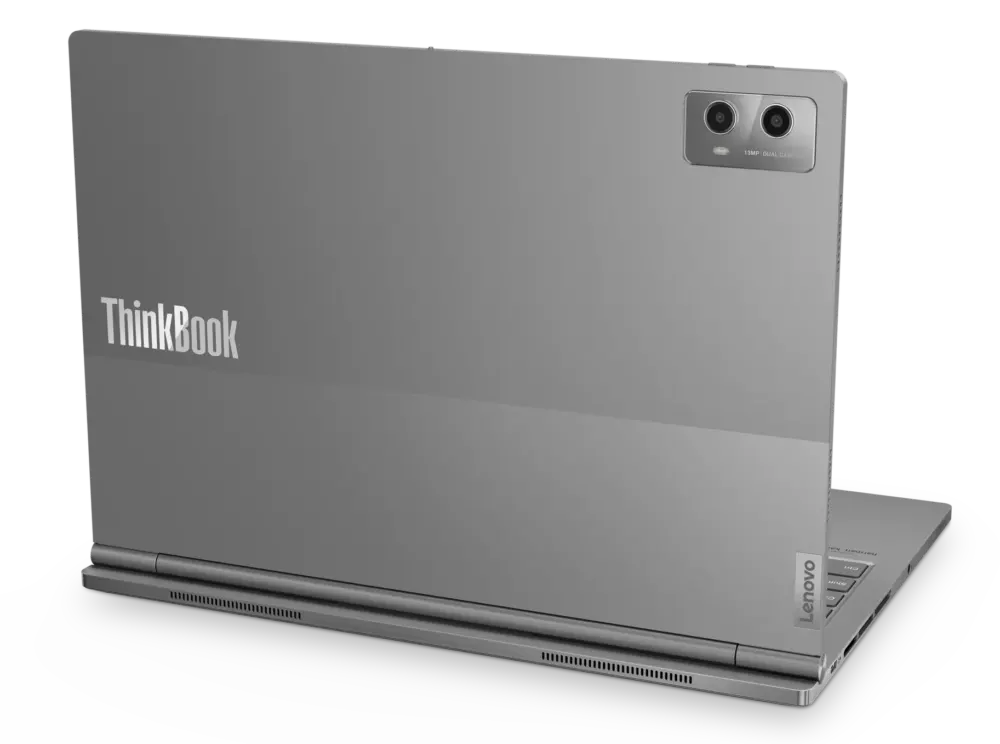
Lenovo ThinkBook Plus Gen 5 Hybrid review: first look
They said laptops with detachable screens were yesterday’s news. After all, Microsoft tested the water with the Surface Book range, and we haven’t seen an update to that since the Surface Book 3 in 2020. Now, however, Lenovo has a new approach. When you remove the screen from the ThinkBook Plus Gen 5 Hybrid, the main PC – that is, the keyboard base – keeps working, while the screen turns into an Android tablet.
It’s a mind-bending arrangement, but for anyone who currently takes a Windows laptop and Android tablet with them on trips it’s a curious and interesting approach. Especially as Lenovo appears to have got the small details right. For example, when you reattach the tablet, your work seamlessly transfers. I took a photo with the tablet/screen, reattached it and the photo appeared in Windows as if I’d taken it with the laptop itself. (And it was a pretty decent photo, too.)
It may seem bizarre, but in some ways the ThinkBook Plus Gen 5 Hybrid’ is an improvement on the Surface Book’s approach. For one thing, it’s far easier to lift off the screen: so long as it’s between 90° and 110° it simply lifts off. And it reconnects with a reassuring firmness too.
Related reading: CES 2024: Business tech trends
Who is the Lenovo ThinkBook Plus Gen 5 Hybrid for?
Lenovo says the ThinkBook Plus Gen 5 Hybrid is designed for “media content creators, designers, logistics professionals, financial analysts, or any users who could benefit from dual functionality”.
The number-crunching comes from an Intel Core Ultra 7 processor, 32GB of RAM and Intel Arc graphics. These sit in the “Hybrid Station” part of this ThinkBook, otherwise known as the base.
Powering the tablet? That’s one of Qualcomm’s Snapdragon o8+ Gen 1 processors, and the tablet aspect was speedy when I switched to Android 13. It helps to have 12GB of LPDDR5 RAM.
Also clever: the base includes a pair of 2W speakers while the tablet packs four 1W speakers. So they both sound good on their own, but their combined power – six speakers – gives audio a notable boost.
Lenovo ThinkBook Plus Gen 5 Hybrid in pictures




Key specs
| Hybrid Station | Hybrid Tab | ||
| Performance | Processors | Intel Core Ultra 7 Processor | Qualcomm Snapdragon® 8+ Gen 1 |
| OS | Microsoft Windows 11 | Android 13 | |
| Memory | 32GB LPDDR5x | 12GB LPDDR5x | |
| Storage16 | 1TB PCIe Gen 4 SSD | 256GB UFS3.1 | |
| Graphics Options | Intel Arc GPU | Qualcomm Adreno | |
| Display | 14in 2.8K OLED Touch/Pen | ||
| Audio | 2 x 2W Harman/Kardon speakers | 4 x 1W Super-linear speakers | |
| Camera | Front: FHD+IR Back: 13MP + 5MP (MIPI) | ||
| Battery | 75Whr; 100W power adapter | 38Whr | |
| Security | Chip | dTPM 2.0 | |
| Physical | Fingerprint Reader Kensington Nano lock slot | IR Camera Camera Privacy E-Shutter | |
| Connectivity | Ports | 2 x USB-C (Thunderbolt 4) 1 x Combo Audio Jack | 1 x USB-C |
| Wireless | Wi-Fi 6E | Wi-Fi 6E | |
| Bluetooth 5.2 | Bluetooth 5.3 | ||
| Design | Dimensions (W x D x H) | 313.5mm x 234.5mm x 9.4mm | 313.5mm x 224mm x 6.6mm |
| Weight | 970g (2.14 lbs) | 785g (1.73 lbs) | |
Lenovo ThinkBook Plus Gen 5 Hybrid price and availability
Lenovo expects the ThinkBook Plus Gen 5 Hybrid to start shipping in the US at some point in Q2 2024. The press release states a starting price of $1,999, and we’re checking to see if that includes the spec above with a Core Ultra 7 processor, 32GB of RAM and 1TB SSD.
NEXT UP

Eight lessons from building an AI product
In 2021, long before ChatGPT, Prashant Mahajan built his own generative AI tool for product managers. Here, he shares his playbook for building an AI product that will stand out from the crowd.

Taavi Tamkivi, Founder and CEO of Salv: “Collaboration between financial institutions, or rather lack of it, has traditionally been a challenge”
We interview Taavi Tamkivi, the Founder and CEO of Salv, a regtech company on a mission to beat financial crime

Apple AI iPhones move one step closer with on-device AI experiments
Apple AI iPhones are a distinct possibility with the release of experimental language models that could run easily on a phone